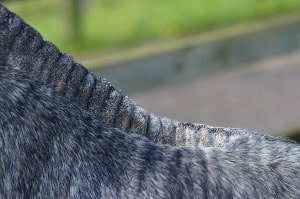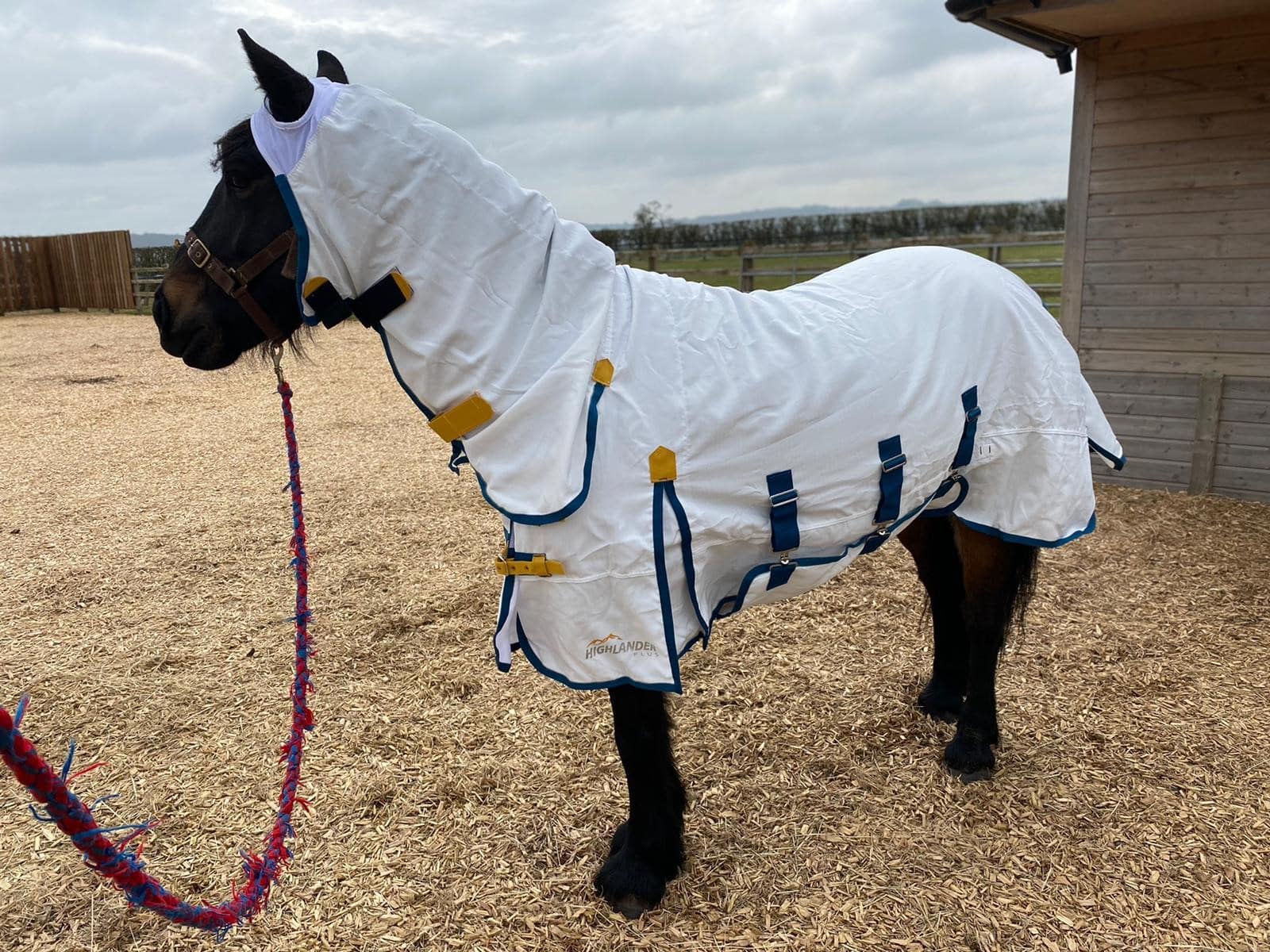Veterinary
What is my horse allergic to – is it sweet itch or something else?
Stuart Davies BVSc MRCVS, discusses the misery of sweet itch and itchy horses
As the weather warms, we find our horses becoming itchier and face an ongoing battle until the weather cools, in order to prevent self-traumatisation and, maintain some sort of mane and tail.
A seasonal pruritis (itchiness) is often blamed upon sweet itch, correctly termed insect bite hypersensitivity (IBH). However, it does have to be recognised that horses with atopic skin disease, due to other environmental allergens, also present with similar clinical signs.
Treatment is largely the same, and unfortunately options have not changed significantly over the years. However, we shall discuss some of the evidence-based treatment options below. IBH has been described in 10% of horses of all breeds across the world¹ except for horses in Iceland where the Cullicoides midge is absent. Horses imported to Europe from Iceland may then develop IBH once exposed to Cullicoides for the first time. This phenomenon occurs more commonly when horses are imported in winter, possibly due to anthelmintic treatments reducing hosts’ immune response, as opposed to when imported in summer and immediately exposed².
The Cullicoides midge obtains a protein rich meal by injecting various salivary proteins into the host in addition to numerous chemicals, enabling it to avoid the host’s immune response. However, it is in the host’s interest to react to the antigens presented within the midge saliva to prevent arthropod (insect) transmitted infection³. In humans a gradual reduction in clinical signs is noted after repeated exposure to midge bites. However, this does not seem to occur in horses and, results in the year-on-year seasonal itch. IBH is characterised by a type 1 and type 4 hypersensitivity reaction.
- A type 1 hypersensitivity reaction is immediate upon midge biting. Immunoglobulin E (IgE) releases antibodies to the salivary antigens, which causes mast cell degranulation and histamine release. This acts upon nerve endings in the skin and can lead to the sensation to itch in addition to local inflammation (reddening, heat and swelling)
- A type 4 hypersensitivity is a delayed response. T cells (macrophages) are stimulated by cytokine (signalling chemical) release, and eosinophil infiltration (type of white blood cell). Vascular permeability increases, which leads to fluid and proteins accumulating at the site of the insect bite causing tissue damage.
As the horse itches, self- trauma of the skin then enables secondary bacterial infection. The compromised epithelial barrier that this damaged skin presents can then enable the horse to become sensitised to further environmental allergens⁴. Intra dermal injections of multiple different allergens into the skin of neck of a horse and measurement of the proceeding skin reaction can allow identification of allergens, with which the horse possesses an aberrant immune response.

From this, a vaccine (immunotherapy) can be produced to modulate the horse’s immune response. Allergen immunotherapy is successfully used to reduce allergic responses in humans and other animals⁵. Success rates for use in horses within the literature are mixed.
However, when considering an improvement in clinical signs rather than complete resolution, owners reported between a 60-80% improvement after 6 months of treatment⁶.
Which part of the midge to include within the vaccine, and the possible geographical variation in antigens exposed, could play a role in lower than reported success rates. Flare ups of pruritis may still require control utilising corticosteroids.
There are anecdotal reports of a vaccine, utilised for immunisation against dermatophyton, (ringworm) that reduced the severity of signs of IBH. However, this has not been proven in scientific studies and anecdotally had disappointing results.
Antihistamines are commonly used but, seldom are effective in the author’s experience. They may, however, possess a synergistic effect with glucocorticoids and reduce the dose necessary, thereby reducing the risk of negative consequences associated with treatment.
Oatmeal shampoos have anti-pruritic, skin cleansing and moisturising effects and should be used in accordance with label guidelines, once weekly throughout the season. Nicotinamide, also known as Vitamin- B3, has been reported to have anti-inflammatory effects. However, one topical product containing this as its active constituent has limited evidence to support its effect⁴.
Omega 3 and 6 have been associated with the detection of less inflammatory products in horses suffering with allergic skin disease⁹. However later studies have failed to repeat these results. These fatty acids are present in flaxseed, linseed and evening primrose. However, doses required are highly calorific and extremely costly, preventing their use.
Unfortunately, avoidance of midge populations, which can sometimes be difficult, remains the most important prevention strategy. This includes:
Topical fly repellents on horses, tack, stabling. These products should contain second generation pyrethroids such as permethrin at a concentration no less than 2%
Removal of moisture from pasture such as bog areas and streams where possible Housing the muck heap as far away from stabling as possible
Maintaining a solid barrier to Cullicoides with the use of a good quality sweet itch or fly rug and mask
Housing horses during dusk and dawn, the most active time for Cullicoides
Keep horses away from sheltered wooded areas. Air flow will make midge flight difficult.

There is not one single method of prevention or treatment option that will work. Instead, a rounded approach should be used incorporating the evidence above until further evidence becomes scientifically proven to have an effect.
All images courtesy of Redwings
Further reading: Does my horse have a horsefly bite or could it be an abscess?
References
- Schaffartzik A, Hamza E, Janda J, Crameri R, Marti E, Rhyner C. Equine insect bite hypersensitivity: what do we know? Vet Immunol Immunopathol. 2012;147(3-4):113–26. https://doi.org/ 10.1016/j.vetimm.2012.03.017.
- Halldordsottir S & Larsen HJ. An epidemiological study of summer eczema in Icelandic horses in Norway. Equine Vet J 1991; 23: 296–299
- Ribeiro JM & Francischetti IM. Role of arthropod saliva in blood feeding: sialome and post-sialome perspectives. Annu Rev Entomol 2003; 48: 73–88
- Rendle, D. (2014) ‘Managing Insect Bite Hypersensitivity in the Horse’.
- Mueller, RS, Jensen‐Jarolim, E, Roth‐Walter, F, et al. Allergen immunotherapy in people, dogs, cats and horses – differences, similarities and research needs. Allergy. 2018; 73: 1989– 1999. https://doi-org.liverpool.idm.oclc.org/10.1111/all.13464
- Stepnik CT, Outerbridge CA, White SD, Kass PH. Equine atopic skin disease and response to allergen‐specific immunotherapy: a retrospective study at the University of California‐Davis (1991‐2008). Vet Dermatol 2012;23:29‐35.
- Petersen, A. (2009) Insect hypersensitivities. In: Current Therapy in Equine Medicine, 6th edn., Eds: N.E. Robinson and K.A. Sprayberry, Saunders Elsevier, St Louis. pp 678‐680
- Johnson, P. J. et al. (2002) ‘Glucocorticoids and laminitis in the horse’, The Veterinary clinics of North America. Equine practice, 18(2), pp. 219–236. doi: 10.1016/s0749-0739(02)00015-9.
- O’Neill W, McKee S, Clarke AF (2002) Flaxseed (Linum usitatissimum) supplementation associated with reduced skin test lesional area in horses with Culicoides hypersensitivity. Can J Vet Res 66: 272–7

